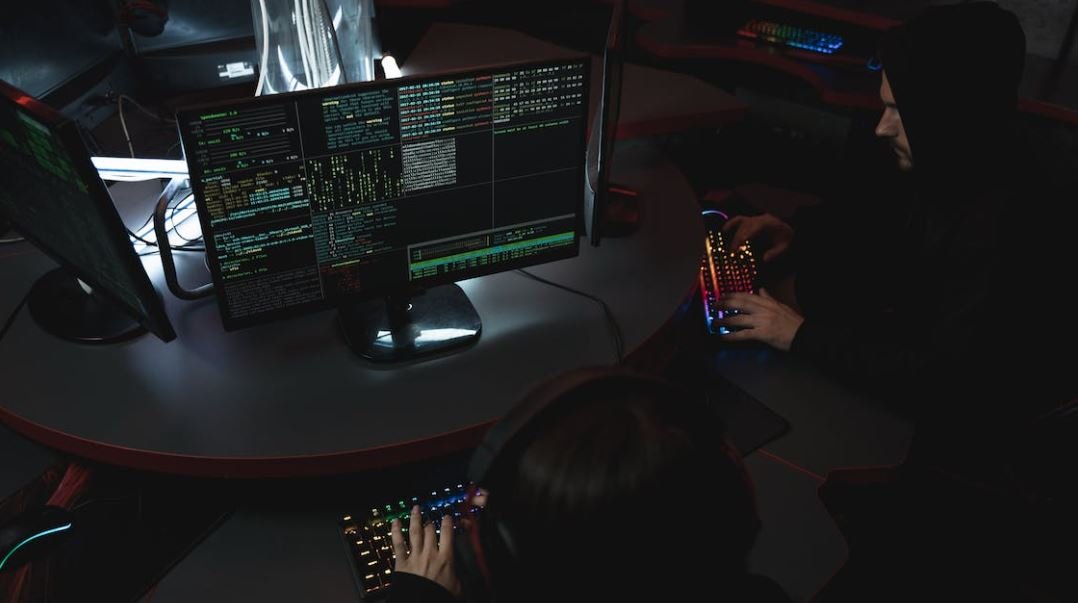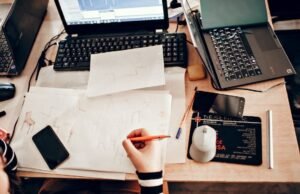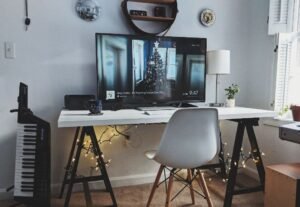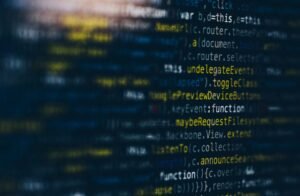Generative Art Grid
Generative art is a form of art that is autonomously created using algorithms, computations, and randomization. One common technique in generative art is the use of a generative art grid. This grid serves as the foundation for creating intricate and unique artistic compositions. Each cell in the grid can be assigned specific attributes such as color, shape, or size, and the algorithm calculates their placement based on predetermined rules or randomization. The final result is a visually stunning piece of art that emerges through the interaction of the algorithm and the grid.
Key Takeaways
- Generative art grids are used to create autonomously generated art.
- Each cell in the grid can have unique attributes.
- The algorithm calculates the placement of each cell.
- The final result is visually stunning and emerges from the interaction of the algorithm and the grid.
Generative art grids offer a wide range of possibilities for artistic creativity. Artists can experiment with different variations by adjusting the grid size, cell attributes, and algorithmic rules. The combination of these elements can lead to an infinite number of artistic outcomes, making each generative art piece truly one-of-a-kind.
Generative art grids provide a platform for artists to explore the unexpected. By embracing the element of chance and incorporating randomness into the algorithm, artists can create art that surprises and intrigues both themselves and the viewers. The process of creating generative art becomes a collaboration between the artist and the algorithm, resulting in a harmonious blend of human creativity and computational ingenuity.
Exploring the Grid: Examples and Techniques
There are several techniques artists can employ when working with generative art grids. One common approach is to assign different attributes to cells based on mathematical formulas or probability distributions. By changing the parameters of these formulas or distributions, artists can create diverse patterns and structures in the grid.
Artists can also introduce elements of interaction into the generative art grid. For example, they can allow users to manipulate specific attributes through a user interface, which directly affects the composition of the grid. This interactive element adds a new layer of engagement for both the artist and the viewer, allowing them to actively participate in the creation process.
Examples of Generative Art Grids
Below are three examples of generative art grids, each showcasing a different approach and outcome:
| Artwork | Artist | Description |
|---|---|---|
| Grid-based Abstractions | John Smith | Cell colors are determined by a chaotic mathematical algorithm, resulting in vibrant and dynamic abstract compositions. |
| Geometric Symmetry | Sarah Johnson | The grid is filled with geometric shapes that follow strict symmetry rules, creating visually pleasing and precise patterns. |
| Organic Growth | Michael Chen | The grid starts with a few randomly placed cells that grow and multiply, creating intricate and organic structures reminiscent of natural phenomena. |
The Future of Generative Art Grids
Generative art grids continue to push the boundaries of artistic expression by combining human creativity with computational algorithms. As technology advances and algorithms become more sophisticated, the possibilities for generative art grids are limitless. With the potential for real-time interaction and dynamic compositions, generative art grids have the ability to evolve and adapt to the ever-changing digital landscape.
Generative art grids are a testament to the endless possibilities that can arise from combining human creativity with computational power. The future of generative art grids is a captivating journey of exploration and innovation that promises to inspire both artists and art enthusiasts for years to come.

Common Misconceptions
Generative Art Grid
When it comes to generative art grids, there are several common misconceptions that people often have. These misconceptions can prevent individuals from fully understanding and appreciating the beauty and complexity of generative art. Let’s debunk some of these misconceptions:
- Generative art grids are always symmetrical.
- Generative art grids are computer-generated images.
- Generative art grids lack human involvement and creativity.
Generative Art is Always Symmetrical
One common misconception about generative art grids is that they are always symmetrical. While symmetry is a common feature in many generative art pieces, it is not a defining characteristic. Generative art can embrace asymmetry and randomness, resulting in visually stunning and unique creations.
- Generative art grids can feature asymmetrical patterns that create a sense of dynamism.
- Asymmetry in generative art grids can evoke a more organic and natural aesthetic.
- Breaking away from symmetry allows for unexpected and surprising compositions.
Generative Art Grids are Computer-Generated Images
Another misconception surrounding generative art grids is that they are solely computer-generated images, created using complex algorithms. While many artists do utilize technology to generate their art, it is important to understand that generative art can also involve manual processes and physical mediums.
- Generative art can be created using traditional mediums like pencils, paints, and brushes.
- Artists often combine digital tools with traditional techniques to create their generative art grids.
- The use of technology in generative art opens up new possibilities for experimentation and exploration.
Generative Art Grids Lack Human Involvement and Creativity
One misconception that undermines the value of generative art grids is the belief that they lack human involvement and creativity. In reality, generative art is a collaboration between the artist and the generative process, where the artist sets the rules and parameters within which the art can evolve and generate.
- Artists infuse their own creativity and decision-making into the generative process.
- Generative art grids are a reflection of the artist’s artistic vision and intent.
- The generative process serves as a tool or medium for artists to express their creativity in a unique way.

Introduction
In recent years, generative art has captured the imagination of artists and technology enthusiasts alike. Through the use of algorithms and mathematical equations, artists can create mesmerizing and unique digital artworks. One popular technique involves dividing a canvas into a grid and assigning different colors or patterns to each cell. This article explores various aspects of generative art grids, showcasing examples and discussing their impact.
Table A: Famous Artists in Generative Art
This table highlights some influential artists who have made significant contributions to generative art through their grid-based creations. Each artist’s distinctive style and notable artwork are briefly described.
| Artist | Description | Notable Work |
|———————–|————————————————————————-|—————————————————|
| Vera Molnár | Hungarian artist known for geometric patterns and systematic approaches. | “Planetary” – Grid-based composition. |
| Manfred Mohr | German artist recognized for computer-generated abstract art. | “P035” – Complex spatial arrangements in a grid. |
| Casey Reas | Co-creator of Processing, an open-source programming language for artists. | “Process 16 (Software 3)” – Dynamic grid display. |
| Marius Watz | Norwegian artist exploring patterns and structures through code. | “Depth of Field” – Algorithmic artwork in a grid. |
| Jared Tarbell | American artist renowned for organic and intricate generative artwork. | “Substrate” – Hypnotic compositions within a grid. |
Table B: Dimensions of Generative Art Grids
This table outlines different dimensions commonly used in generative art grids, ranging from two to four dimensions. These dimensions influence the complexity and visual impact of the artworks created.
| Dimensions | Description |
|————————-|————————————————————-|
| 2D | Basic grid with rows and columns, forming a flat composition. |
| 3D | Introduces depth and perspective, creating a sense of space. |
| 4D | Incorporates time as an additional dimension, allowing animation. |
Table C: Color Schemes in Generative Art Grids
The choice of colors greatly influences the mood and aesthetic appeal of generative art grids. This table demonstrates various color schemes frequently employed in these artworks.
| Color Scheme | Description |
|—————————–|—————————————————————————|
| Monochromatic | Utilizes different shades of a single color, creating a harmonious effect. |
| Analogous | Consists of colors adjacent to each other on the color wheel. |
| Complementary | Combines colors that are opposite to each other on the color wheel. |
| Triadic | Uses three colors equally spaced from each other on the color wheel. |
| Warm/Cool | Combines warm colors (red, orange, yellow) with cool colors (blue, green). |
Table D: Tools Used in Generative Art
Creating generative art grids often requires a combination of artistic skills and programming knowledge. This table presents various tools and software that artists commonly employ in their creative process.
| Tool | Description |
|——————————-|————————————————————————-|
| Processing | An open-source programming language for creating visual artworks. |
| Adobe Illustrator | Vector-based design software extensively used for generative art. |
| Max/MSP | A graphical programming environment utilized for interactive art. |
| Unity | A game development platform with capabilities for generative art. |
| p5.js | A JavaScript library enabling artists to create algorithmic art. |
Table E: Algorithms for Generative Art Grids
Generative art grids rely on algorithms to determine the colors, patterns, or shapes of each grid cell. This table explores some popular algorithms artists use to generate visually intriguing grids.
| Algorithm | Description |
|—————————–|—————————————————————————————————|
| Voronoi | Divides the canvas into regions based on the close proximity to data points, creating unique patterns. |
| Perlin Noise | Generates smooth, continuous patterns often resembling clouds or water. |
| L-System | Uses string rewriting rules to create complex branching structures. |
| Cellular Automaton | Applies simple rules to grid cells, resulting in intricate and organic patterns. |
| Brownian Motion | Simulates the random movements of particles, constructing abstract compositions. |
Table F: Generative Art Grid Examples
This table showcases stunning examples of generative art grids created by different artists. Each artwork is described along with its unique features.
| Artwork | Artist | Description |
|———————-|———————–|—————————————————————————————————————————————————–|
| “Emergence” | Mark J. Stock | A complex and detailed grid that simulates biological growth through algorithmic processes. |
| “Bacterial Loop” | Santiago Torres | Grid-based representation of bacterial growth, displaying cells that replicate, adapt, and interact with each other. |
| “Fractured Sands” | Anna Ridler | A generative artwork that explores the visualization of data through vivid colors and intricate cellular-like patterns. |
| “Ascent” | Filip Hodas | A grid filled with floating rocks and mountains, exemplifying the artist’s fascination with surreal landscapes and vibrant colors. |
| “Neon Dreams” | Matt DesLauriers | A mesmerizing grid composition featuring glowing neon colors that appear to bend and flow, conveying a dream-like atmosphere. |
Table G: Benefits of Generative Art Grids
Generative art grids offer various advantages, both for artists and viewers. This table presents some key benefits associated with this art form.
| Benefit | Description |
|———————————–|———————————————————————————————————–|
| Infinite Variation | The use of algorithms allows for the creation of an almost infinite number of unique and original artworks. |
| Serendipity | Randomness within the algorithms often leads to unexpected results, sparking ideas and exploration. |
| Efficiency | Artists can create intricate and complex compositions efficiently, thanks to the aid of algorithms. |
| Interactive Potential | Some generative art grids include interactive elements, allowing viewers to engage and influence the art. |
| Accessibility and Reproducibility | Digital platforms enable easy sharing and distribution, making generative art more accessible and reproducible. |
Table H: Challenges in Generative Art Grids
While generative art grids offer various advantages, they also present challenges that artists need to overcome. This table highlights some of these challenges.
| Challenge | Description |
|———————————-|—————————————————————————————————————————————|
| Balancing Control and Creativity | Artists must find a balance between guiding the algorithms and embracing randomness to maintain their artistic vision. |
| Computational Complexity | Creating complex generative art grids may require substantial computational resources, posing limitations on certain devices or platforms. |
| Overcoming Algorithmic Bias | Algorithms may exhibit inherent biases or limitations, requiring artists to carefully fine-tune or challenge them to achieve desired effects. |
| Copyright and Ownership | Determining copyright and ownership of generative art can be challenging, especially when algorithms are partly responsible for the outcome. |
Conclusion
Generative art grids offer a fascinating glimpse into the creative possibilities that arise from the intersection of art and technology. With the aid of algorithms, artists can craft intricate and captivating compositions, evoking awe and admiration. The exploration of dimensions, color schemes, and algorithms allows for the generation of an immense variety of unique artworks. While these grids provide numerous benefits, they also present challenges related to creative control, algorithmic bias, and platform limitations. Regardless, the growing popularity of generative art grids showcases their enduring impact on the art world, and their potential for further innovation and artistic expression.
Frequently Asked Questions
What is generative art?
Generative art refers to the creation of artwork that is generated algorithmically, often with the help of computer software or code. It involves the use of rules, randomness, or other parameters to produce unique and endless variations of an artwork.
How is generative art created?
Generative art can be created through various methods, such as programming, scripting, or using specialized software. Artists usually define a set of rules, algorithms, or parameters that govern the generation process, allowing for the creation of diverse and unpredictable artworks.
What are some examples of generative art?
Examples of generative art include computer-generated fractal patterns, algorithmic music compositions, procedurally generated landscapes, and interactive visual installations. It can also encompass digital animations, data visualizations, and even physical sculptures created using generative processes.
What is a generative art grid?
A generative art grid is a type of artwork that utilizes a grid-based structure as its foundation. The grid serves as a framework for the generation of various elements, such as shapes, colors, or patterns. Each cell within the grid can be uniquely designed based on predefined rules or algorithms, resulting in a visually stunning and cohesive composition.
Can generative art grids be interactive?
Yes, generative art grids can be made interactive, allowing users to manipulate or influence the artwork dynamically. This interactivity can be achieved through user input, real-time data, or responsive behaviors. Interactive generative art grids often provide an engaging experience and a sense of participation for viewers.
How can I create my own generative art grid?
To create your own generative art grid, you can start by learning programming languages commonly used for generative art, such as Processing, p5.js, or using specialized software like Max/MSP or TouchDesigner. By understanding fundamental concepts of generative art and experimenting with code or visual tools, you can begin creating your unique generative art grids.
What are the benefits of using generative art grids?
Using generative art grids offers a range of benefits for artists and viewers alike. It provides a platform for exploration and experimentation, offering endless possibilities for unique and captivating visual outcomes. Generative art grids also challenge traditional notions of static art by introducing dynamic and interactive elements, promoting creativity and engagement.
Can generative art grids be printed or displayed physically?
Yes, generative art grids can be printed or displayed physically. Artists often output generative artwork in various forms, such as high-quality prints, digital projections, or installations involving physical objects. This allows the artwork to be exhibited in galleries, museums, or other physical spaces, providing viewers with a tangible and immersive experience.
Are there any copyright considerations for generative art grids?
Yes, copyright considerations are relevant for generative art grids, just as they are for other forms of artwork. While generative art involves using algorithms or programming, the resulting artwork is still subject to copyright protection. It is important for artists to be aware of their rights and to respect the rights of others when exploring generative art.
Where can I see generative art grids online or offline?
Generative art grids can be found online through various platforms, such as artist websites, galleries, or social media platforms focused on showcasing digital art. Offline, you can explore generative art grids through exhibitions, art festivals, or events that feature interactive or digital art installations. Additionally, many artists actively participate in the generative art community, making their work accessible through conferences, workshops, and online communities.




